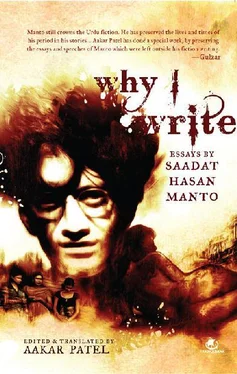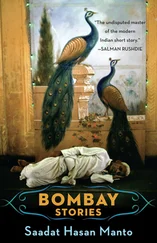There are many ways of educating a nation, but there is consensus that film is an important one. It is easy and efficient to communicate a message, even one that is complicated, through movies.
Texts weigh heavy on the individual and for most children, so does schooling. It is no different in college, of course. But the message that might take months of studying to properly understand, however, might be passed on in an instant through films.
India needs entertaining movies that also educate, exercise the mind and introduces us to new ideas and new thinking.
At the moment, our producers believe in nothing but profit. This is fine as it is after all a business, but we must complain. First, very often third-rate films are produced and screened in the belief that they attract more viewers and bring in more profit. This notion is misplaced. Entertainment is produced ; it doesn’t produce itself. If there are many among us who like cheap entertainment, it is the doing of our producers.
There isn’t great interest in stories of sorcery, mumbo-jumbo and magic as our producers think. People want to see something that concerns them. The purely physical is always transient, and how many of us still remember the stunts of Master Vithal?
What we need is films that teach, not ones that make us forget. Films that make us love our language, our nation. We want the pages of humanity to be opened before us. Can’t our producers do this? Can’t they make profits by doing this?
Need for brevity: looking at the length of our movies from the silent era, it appears our producers think that unnaturally long films are preferred by the audience. Perhaps there is some truth to this. But the fact is that this is the age of being to the point. When a film’s story can be completely revealed in seven or eight thousand feet of film, what is the point of extending it to 15,000 feet?
What happens when this is done is obvious. Like a piece of rubber which can only be stretched so far and no further, the film’s story snaps. It loses the integrity that it had in the shorter version.
However skilled a movie’s director may be with the digressions that extend the movie, he cannot succeed in improving the original.
A longer film must necessarily have longer dialogues. The actors will be forced to slow the pace and the plot will appear stupid. Longer movies also take longer to make and cost more money.
Films that could be made within 60,000 or 70,000 rupees take a lakh to finish. And if they flop, they seriously damage the producer. The other thing is to make a lengthier film, producers and directors introduce unnecessary song and dance. This is supposed to prettify the film but the aim is rarely, if ever, achieved. The additional money spent in shooting is not justified by the result. Songs and scenes have a place and time. Removed from these, they lose their meaning and beauty. So it’s important that our producers make their films shorter.
Cutting their 18,000-feet movies in half can produce a revolution in moviemaking. To set a two-hour programme, our producers should follow Hollywood. Before the movie, a newsreel or a reel or two of cartoons should be shown, as is also the case in Europe. Audiences are kept informed of the latest news from other nations.
Here, we have been needlessly watching lengthy films for twenty-five years. It’s time to end this chapter.
Stars: for thirty years, the masters of Hollywood have puzzled over this question — is the star more important or the film? So intensely has this been debated that the very thought of it now raises emotions. Perhaps the one valid response to this question would be to ask: ‘What is that you just said?’ It’s as absurd as asking whether the chicken came first or the egg. If a satisfactory answer to this can be found, we will no doubt also be able to figure out whether the film is more important than the star.
Frank Capra, the famous director from Columbia Pictures, recently expressed his views in an English newspaper regarding this. He said: ‘I’m with those who think that the film is most important. It is the film that makes the star and the biggest star cannot rescue a bad film.’
This is obvious but here in India, people are not in complete agreement with the statement. The best way of looking at it is to ask: ‘How are stars formed and with what?’
Capra answers this most interestingly: ‘If producers handed me all their money and said — “Now make us three stars”, I would be at a loss. I have no idea where to get a star from.’
In the silent era, Hollywood’s stars came from anywhere — hotels, factories and offices. Now, in the time of talkies, the supply ended because more skill was required. Here in India, stars came from the stage or the brothel. In the future, just as it happened in Hollywood, the supply of stars is going to end here as well.
Anyway, we were talking about what is it that results in the making of a star? Capra, who has directed the biggest stars of Hollywood, says that casting a film right is what produces a star. In his opinion, a Chinese character must only be played by a Chinese. Similarly the part of a man who is handicapped must be essayed by one who actually has that particular handicap.
I agree with Capra. We, you and I, can play ourselves better than we can someone else. Capra has given many examples of what he means, including that of Gary Cooper. He says Cooper presents himself on screen in true colours. That is to say, in real life because he is of good humour and classy, he can communicate that without much effort.
So a good and sensible casting makes stars out of actors. That of course is not the end of it because right casting merely doesn’t produce a hit film. Other things are required and as a viewer, you are familiar with what these are. Good actors and technicians are of course crucial. Till everything is in place, a hit film will not be produced. Just like a very expensive watch must be put together flawlessly for it to be able to tell time accurately all the time, a film in all its minutest parts and components must be perfect.
Directors: the biggest problem of Indian cinema is the lack of stylish directors. All storytelling requires a certain sense of style. It is this which separates the work of one writer from another. It is no different for films and their directors. In the absence of this individualism, films will resemble one another. Indian films have been screened for some years now, but there have only been a handful in which we can observe the style and individualism of a director. The rest have been put together in much the same way, and their makers have neither seen things differently nor originally.
We may surmise that the problem was that the producers hired less than competent directors who themselves didn’t understand the story and its narrative. Nor have they been able to make their audience understand.
Many films are made and shown in India these days but truth be told, few of them are really “films” if judged against the craft of filmmaking. Most directors have no sense of imagination. They only know close-up, mid-shot and long-shot. This they set about to do with the story in hand, bringing the camera every so often to the heroine’s face. They don’t really understand the idea of a close-up and where it should be deployed.
They are like writers who indulge in meaningless word play.
If an Ernst Lubitsch film is shown without credits, we can still identify it from the comic scenes and the smallest details. In an exotic outdoor location, when we see a heroine flitting about like a butterfly, we can feel the heart of D W Griffith, a lover of nature and the outdoors, aflutter behind the camera. Similarly, Eric Von Stroheim’s love for realism cannot be hidden. Many such examples can be given of directors and their individualism. Almost every Hollywood director has his own sense of style and this is the reason for his success.
Читать дальше












